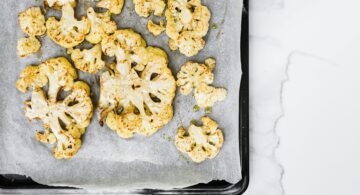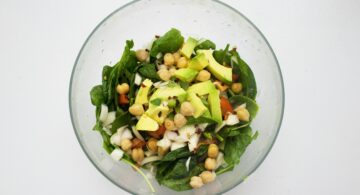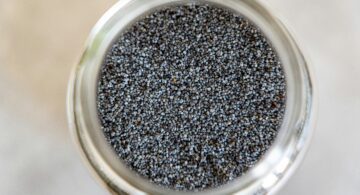Better Cholesterol With Butter?
As a natural health practitioner, I get asked all sorts of questions about what I eat.
- Are you a vegan?
- Do you eat only raw foods?
- Are you gluten-free?
However, nothing shocks people more than when I confess my favorite and most consumed food: BUTTER.
By now, I’m used to the gasps and the questioning looks I receive upon my confession. I’ve been given speeches about how it is going to clog my arteries or cause me to gain weight. But my favorite response has got to be, “You’re young; it is going to catch up with you some day!”
I wholeheartedly disagree. I don’t fear butter, or most fats for that matter. My family line is plagued with heart disease, strokes, and high blood pressure. Yet I refuse to change my butter-loving ways. That is because I know something that most people don’t.
Eating saturated fat does not raise your cholesterol, nor does not contribute to heart disease!
The low-fat revolution is a BIG FAT LIE!
Before you stop reading because you think I’ve completely lost my mind, I urge you to give me a chance to explain myself. I know doctors tell you differently, but I want to invite you to join me in debunking the myth that saturated fat is bad.
Read on and by the time you’re finished with this article, you may be tossing out your low-fat foods and replacing them with their full-fat counterparts!
Hydrogenated Oils
Saturated fats have long been demonized as the heart clogging “bad” fat. The famed “heart healthy diet” is typically low in fat and does not allow any unsaturated fat.
It prohibits animal-based fats like butter, meat, and whole milk products. Tropical oils like coconut oil are also a saturated fat and considered to be heart clogging. Instead, the “heart healthy diet” replaces naturally sourced fat with man made lower-fat alternatives and deems them more heart healthy.
When the shift away from animal fats became popular, vegetable oil based products began to flood the market. We no longer ate the natural sourced foods that have been around for thousands of years. Margarine and low-fat milk became the so-called healthier alternatives. And society bought the lie hook, line and sinker.
Interestingly enough, Procter and Gamble, the maker of Crisco, a vegetable based alternative to lard and butter, helped launch the American Heart Association. As a result, it wasn’t too long before doctors began to recommend vegetable oils instead of animal fats in their patient’s diets.
For close to 60 years, we favored hydrogenated fats like Crisco and margarine because we believed they were healthy. Luckily, research has recently proven that artificially manufactured hydrogenated oils are far worse for our health than any other fat on the market!
Hydrogenated oils are chemically altered and are closer in composition to plastic than oil.[1] Consuming hydrogenated oils in food is literally like eating fake food! It may taste good to you, but you might as well take a bite out of a plastic toy hamburger!
Eating food that is chemically structured like plastic is extremely dangerous! It can change the viscosity of our blood, which is the biggest threat. If blood becomes thicker and harder to pump, then our blood pressure automatically rises.
Plus, blood thick with hydrogenated oil damages the artery walls. The workload forces your arteries to pump with increasing pressure. The increased workload and pressure to pump causes damage to the arteries. What comes to repair the arteries? Cholesterol.
Let me clarify this for you. Cholesterol is often blamed for clogged arteries. But cholesterol is simply showing up to fix the damage. It is doing nothing more than it’s God-given job.The real culprit in this situation is hydrogenated oil.[2]
The Truth About Unsaturated Oils
Saturated Fats
Saturated fats are commonly identified because they are solid at room temperature, and unsaturated fats are liquid at room temperature. Saturated fat may seem like a poor choice compared to the thinner, liquid unsaturated fats. However, this difference is in their chemistry.
The difference between saturated fats and unsaturated fats is that saturated fat is “saturated” with hydrogen atoms. This keeps the fat intact. Unsaturated fats have less hydrogen. This allows for free radicals to attack where there is no saturation.
Polyunsaturated Fats
Polyunsaturated oils also have unprotected areas that are easy targets for oxidation and free radicals. These oils are, unfortunately, often touted as the healthiest fat you can consume. This couldn’t be much further from the truth.
Their chemical composition makes them highly unstable. They can easily go rancid or oxidize. Heat, moisture, and exposure to oxygen promote this detrimental change in chemical structure. Simply cooking with unsaturated oils produces oxidation.
Rancid and oxidized oils contain free radicals. Free radicals act like pillagers by attacking cells, damaging DNA and causing inflammation. Our bloodstream absorbs these oxidized cells, which then deposits LDL (bad) cholesterol on our artery walls, causing damage and plaque buildup.
The consumption of polyunsaturated fats is behind many health problems including:
- Cancer
- Heart disease
- Autoimmune disorders
- Liver damage
- Weight gain
- Digestive problems
The typical American diet contains around 30% polyunsaturated oils a day! These oils hide out in processed foods and fast foods. The most common polyunsaturated oils are:
- Corn
- Soy
- Canola
- Safflower
Avoiding these polyunsaturated oils is important for keeping cholesterol build-up at bay. But it is also crucial for preventing many other health conditions the oils can contribute to.
Many believe because these oils are vegetable based, that they are a healthier choice. However, these oils can cause damage from being chemically unstable. To make matters worse, they are also highly processed and covered in pesticide residues.
If at all possible, cut these harmful polyunsaturated oils from your diet! Don’t forget to read the labels on all the food you buy. Canola and safflower oil are even found in “health food” products!
Monounsaturated fats
Monounsaturated oils are far healthier than polyunsaturated oils. Though still unsaturated, they experience markedly less oxidation during cooking. Some healthy sources of monounsaturated fats include:
- Olive oil
- Peanut oil
- Avocado oil
These oils are great for sautéing and baking. Let me give you one valuable piece of advice. Avoid frying with monounsaturated oils at high temperatures because this can cause oxidation and lead to inflammation. Remember, saturated fats are you friends when it comes to fats!
The Benefits of Saturated Fat
Saturated fat does not cause heart disease, nor does it raise your cholesterol. Studies have begun to surface supporting this. The Annals of Internal Medicine most recently published an article here that supports change in fatty acid consumption to promote cardiovascular health.
Saturated fats can benefit our health in many ways. You might have noticed the rise in popularity of coconut oil. For years, we regarded it as dangerous and damaging to our health. But once we discovered its amazing medicinal properties, coconut oil demand skyrocketed![3]
A recent study added a soybean oil or coconut oil to the diet of 40 women. Not surprisingly, the women who consumed the coconut oil had a significant decrease in their waist circumference with increased weight loss, as well as increased HDL (“good” cholesterol) and decreased ratios of “bad” to “good” cholesterol.[4]
Coconut oil is only one tropical oil that is healthy saturated fat. The best sources of saturated fat from animals are eggs, grass-fed beef and buffalo, organically-raised chickens and wild-caught fish.
Some of saturated fats roles in the body include:
- Bone strength
- Cell membrane integrity
- Increased immunity
- Contributes to weight loss
- Improves lung health
- Protects the Liver
As it turns out, people who have the highest percentage of saturated fat in their diets have the lowest risk of heart disease. Some saturated fats contain specific fatty acids called palmitic and stearic acid, which can LOWER cholesterol levels!
Sugar: The True Culprit of High Cholesterol
Though polyunsaturated oils and hydrogenated oils can contribute to cholesterol buildup, there is a culprit that is far worse. Carbohydrates!
Processed carbohydrates, which many Americans eat today in place of fat, increase the risk of obesity, heart disease and high cholesterol.
Some physicians with all their training, knowledge and authority don’t often admit they are wrong. But there are a few doctors who have had it right from the beginning.
While some doctors were promoting low-fat diets, Dr. Atkins and Dr. Weston Price had diet plans that encouraged the opposite. Although, Price had passed away before the low-fat revolution, Sally Fallon took over his cause. Both Atkins and Price touted a higher-fat, lower-carbohydrate diet for health and wellness. Neither were fearful of saturated fats. Both believed that refined sugar and processed carbohydrates were behind the breakdown of health.
Though a can of soda may not contain an ounce of fat or cholesterol, it is far more dangerous than high cholesterol foods like the incredible edible egg.
Sugar contributes to heart disease by[5]:
- Increasing LDL cholesterol
- Decreasing HDL cholesterol
- Raising triglycerides levels
- Increasing inflammation
These side-effects make sugar nothing short of deadly. Thankfully, The American Heart Association has finally caught on. It now recommends a low sugar diet after years of promoting sugar instead of fat.
White flour and processed foods can act identical to sugar in the body. A carbohydrate in wheat, called amylopectin A, is more easily converted to blood sugar than just about any other carbohydrate. Two slices of bread made with whole-wheat flour raise blood sugar higher than six teaspoons of table sugar and higher than many candy bars. [6]
An easy way to avoid refined carbohydrates is by substituting vegetables for grains at mealtime. Eating a salad or adding an extra portion of green beans to your plate is much better than a slice of bread.
Back To Butter
In my defense of my favorite food, butter, I want to list some of the amazing benefits of this saturated fat.[7]
- Helps the body to absorb and utilize minerals
- Protects against infections in the intestinal tract
- Protects against plaque build-up in the arteries
- Increases brain function
- Stimulates weight-loss (via CLA found only in grass or pasture-fed butter)
- High in fat soluble vitamins A, E, and K
- Prevents cancer[8]
Butter, in my opinion is a health food. So, do you still think I’m crazy?
I want to clarify that not all butter has these amazing health benefits. Most of us can agree that the nutritional content of the animal’s flesh depends on the content of its diet, and the same goes for butter.
Only grassfed or pasture butter contains health promoting CLA (conjugated linoleum acids) and high levels of fat-soluble vitamins. CLA has been linked to superior heart health, suppression of tumors, reduced belly fat and greater fat loss in the obese and overweight. Most milk cows are pasture raised, but are also fed a diet high in soy and corn. But without a primarily grass based-diet, these cows will not produce milk high in nutrients. Pasture feeding leads to dairy CLA levels 3-5 times that of grain-fed cattle.[9]
You can actually see the difference in color between grassfed butter and regular butter. Grassfed butter is bright yellow in color. It’s yellow because it has more carotene (think carrot, think orange) and Vitamin A. Regular butter is nearly white unless food coloring is added. Kerrygold is a great brand of grassfed butter and is typically found at most health food stores.
If you’d like to make your own butter, it’s really quite simple. The hardest part is finding quality cream. Raw, pastured cream from a local farmer is best. However, if you can’t find a source, you can also use organic cream.
Homemade Butter
- 1 pint organic, pastured, heavy whipping cream
- 1 pinch salt (optional)
Directions
- Pour cream into a blender, food processor, or large, empty jar with a tight fitting lid. Secure the lid and turn the processor on at its lowest setting. It will only take a minute or two before you have whipping cream.
- For salted butter, stop your processor and add a pinch of sea salt, to taste.
- Secure the lid again and continue to blend on low. In another minute or two, you will start to see a lot of liquid. Once you have this liquid, you’re done!
- Take a large cup, or bowl, and place some cheesecloth, a paper coffee filter or a small, fine-meshed sieve in it. Pour the butter into the cloth and let it drain. Carefully squeeze out some of the remaining buttermilk. Gently unwrap the cheesecloth and transfer the butter to your butter dish.
Adapted from www.thegraciouspantry.com
You don’t have to stop there! You can add herbs, spices, and fruits to your butter for delicious creamy goodness. Flavored butters are absolutely amazing and the combinations are endless! Add a touch of elegance to your next meal with your own homemade flavored butter. Use flavored butters on breads, sandwiches, or, with vegetables, meats, fish or eggs.
Here are a few recipes. But don’t be afraid to experiment and create your own flavor combinations!
Ingredients:
Raspberry Walnut Butter:
- 1 cup butter
- 1/3 cup raspberries
- ¼cup finely chopped walnuts
Lemon Pesto Butter:
- 1 cup butter
- Clove of garlic minced
- 1 teaspoon lemon zest
- ¼ cup chopped fresh basil or 1 teaspoon dried basil
Honey Mustard:
- 1 cup butter
- 2 teaspoon dry mustard
- 2 tablespoon honey
Pumpkin Pie:
- 1 cup butter
- 2 tablespoon canned pumpkin
- 1 tablespoon honey
- 1 teaspoon molasses
- 1 teaspoon pumpkin pie spice
Directions:
- Let the butter thaw to room temperature and using a stand mixer, whip until fluffy (just ten seconds or so). Add ingredients and whip until combined. You can do this by hand, but the mixer just makes it easier.
- Once combined, either spoon into little glass dishes and store in fridge, or prepare in logs.
- To prepare logs, place whipped butter on parchment paper and cool in fridge. When the butter has cooled a little, roll it into a log inside the parchment paper. It will harden in the fridge. Slice off just the amount you need for a serving.
This grain-free cookie recipe contains no refined sugar and incorporates plenty of my favorite ingredient…butter! A low-sugar, healthy diet does not have to be bland. Everyone needs a little sweet in your life, and these cookies are just that!
Butter Cookies
Ingredients:
- 2 ½ cups blanched almond flour
- ½ teaspoon Celtic sea salt
- ½ cup salted butter, cut into pieces
- ¼ cup honey
- 1 tablespoon vanilla extract
Directions:
- In a food processor, place almond flour and salt and pulse briefly. Add butter, honey, and vanilla and pulse until ingredients are well blended. Separate dough into 2 balls and place each on a piece of parchment paper. Cover each ball of dough with another piece of parchment paper and roll out to your desired thickness. Place in freezer for 30 minutes. Using a 2-inch round cookie cutter or the top of a 2-inch wide jar cut out cookies. Bake at 350° for 5-7 minutes.
- Add butter, honey and vanilla and pulse until ingredients are well blended.
- Separate dough into 2 balls and place each on a piece of parchment paper.
- Cover each ball of dough with another piece of parchment paper and roll out to ½ inch thickness.
- Place in freezer for 30 minutes.
- Using a 2-inch round cookie cutter (or the top of a 2-inch wide jelly jar) cut out cookies and place on cookie sheet.
- Bake at 350° for 5-7 minutes.
Adapted from www.elanaspantry.com
Icing (optional)
Ingredients:
- 3 tablespoon of melted butter
- 2 teaspoon honey or ¼ teaspoon of liquid stevia
- ¼ teaspoon vanilla extract
- ⅛ teaspoon lemon juice
Directions:
- Mix ingredients together and spread over cooled butter cookies.
Life presents us with wonderful serendipities… like making butter that’s good for you! Butter is truly a superfood. So what are you waiting for? Go make a batch of homemade butter and put a generous helping on your vegetables!
This article may be opposite of what you have believed for years about cholesterol. But, wouldn’t you agree that it is good news!?
You no longer have to deprive yourself of some of the most delicious foods, including butter! Saturated fat doesn’t have to be your enemy any longer.
Instead, avoid hydrogenated and polyunsaturated oils if you have cholesterol concerns. Protect yourself from heart disease by reducing your sugar and carbohydrate intake.
The true way to achieve healthy cholesterol, and overall well-being, is to eat the fresh and healthy foods of our ancestors.
Do you agree that butter is a superfood? Then use the sharing icons below to spread the word!























